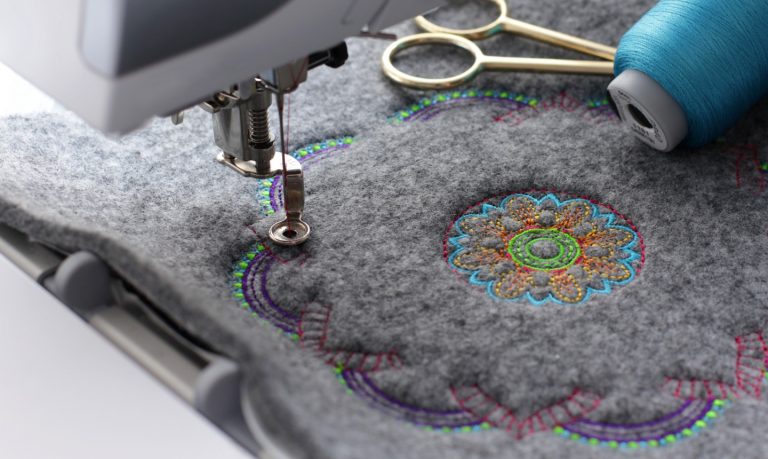Finest Digitizing for Embroidery: Enhance Your Tasks
Finest Digitizing for Embroidery: Enhance Your Tasks
Blog Article
Understanding the Needlework Digitizing Refine: Your Ultimate Overview
Needlework digitizing is a meticulous craft that requires precision and expertise to convert elaborate styles into digital formats for machine needlework. As artisans embark on this journey to master the needlework digitizing procedure, a thorough understanding of the basics sets the foundation for quality. Nevertheless, past the simple understanding exists a world of innovative software, specialized devices, and nuanced techniques waiting to be discovered. By diving into the subtleties of digitizing, one can open a globe of creative opportunities and boost their embroidery tasks to brand-new elevations.

Recognizing Embroidery Digitizing Essentials
Embroidery digitizing basics develop the foundation upon which detailed designs are equated right into machine-readable layouts for exact sewing. This first step in the needlework digitizing process is essential for ensuring that the final embroidered product is a faithful depiction of the original layout. Understanding needlework digitizing essentials involves realizing vital principles such as stitch kinds, stitch direction, density, underlay, and draw compensation.
Stitch kinds play a vital function in establishing the visual and textural end result of the embroidered design. By selecting the proper stitch kind, whether it be satin, fill, or running stitch, digitizers can achieve the wanted effect and boost the general quality of the embroidery. Additionally, stitch direction affects the flow and measurement of the style, while density determines the spacing and insurance coverage of the stitches.
Additionally, padding sewing provides stability to the layout by securing the textile and protecting against distortion during the needlework process. Pull settlement is one more essential consideration to counteract the all-natural tendency of material to contract when sewn. Grasping these needlework digitizing basics is essential for creating professional-quality embroidered items.
Picking the Right Digitizing Software Application
Picking the suitable digitizing software application is a vital choice that significantly affects the effectiveness and top quality of the needlework digitizing procedure. Digitizing for Embroidery. When picking the right digitizing software program, it is vital to think about factors such as the complexity of designs you plan to produce, the user-friendliness of the software application, the degree of client assistance supplied, and the compatibility with your needlework equipment
There are different digitizing software program choices offered in the market, varying from fundamental programs for newbies to sophisticated software for expert digitizers. Some preferred choices consist of Wilcom EmbroideryStudio, Hatch Needlework Software, and PulseID. These software use a variety of devices and functions to aid you produce elaborate styles easily.
Prior to making a decision, it is suggested to discover the various software alternatives through free trials or trials to identify which one finest suits your demands. Furthermore, checking out reviews and seeking recommendations from experienced digitizers can give important understandings into the strengths and weaknesses of each software program bundle (Digitizing for Embroidery). By thoroughly reviewing your requirements and contrasting the attributes of different digitizing software program, you can make an informed read the article option that improves your embroidery digitizing workflow
Digitizing Devices and Methods

Optimizing Design Setup for Embroidery
Understanding the complexities of design setups is essential in achieving optimum outcomes in the needlework digitizing procedure, building upon the structure laid by understanding digitizing tools and methods. When maximizing style settings for needlework, it is crucial to think about variables such as stitch kind, density, padding, draw payment, and enrollment. Enrollment settings line up different components of the layout read review accurately, maintaining total design integrity.

Troubleshooting Common Digitizing Issues
When running into usual digitizing issues throughout the needlework process, it is vital to recognize the origin and implement reliable remedies promptly. One common trouble is stitch thickness problems, where stitches may be also dense, creating the material to pucker, or as well sporadic, leading to gaps in the style. Adjusting the stitch thickness setups in the digitizing software program can assist settle this issue.
Another regular difficulty is string breaks during the embroidery process. This can take place as a result of various factors such as wrong stress settings, boring needles, or utilizing low-grade thread. Making sure proper upkeep of the embroidery machine, consisting of normal needle adjustments and stress modifications, can reduce the event of string breaks.
Moreover, layout enrollment errors see page can cause misaligned aspects within the needlework style. Examining the style positioning in the digitizing software program and making needed changes before stitching can assist in preventing this problem. By attending to these common digitizing problems without delay and efficiently, you can guarantee a smoother embroidery procedure and top quality finished items.
Verdict
Finally, mastering the needlework digitizing procedure needs a solid understanding of the fundamentals, the best option of software, and understanding of tools and strategies. Maximizing style settings and troubleshooting typical digitizing concerns are important actions in making sure premium embroidery results. By complying with these steps diligently, one can attain precision and effectiveness in the digitizing procedure.
Report this page